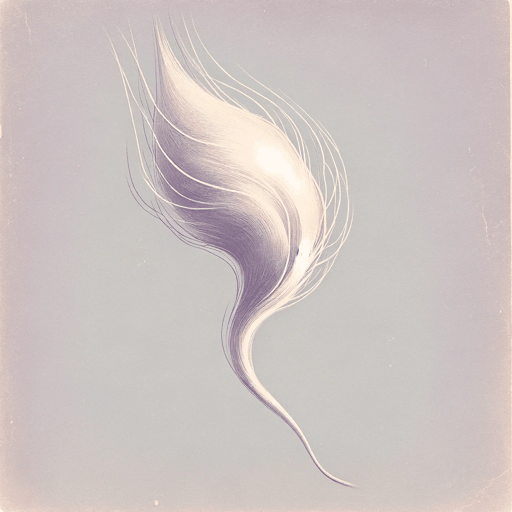19 pages • 38 minutes read
Gwendolyn BrooksTo The Diaspora
Fiction | Poem | Adult | Published in 2014A modern alternative to SparkNotes and CliffsNotes, SuperSummary offers high-quality Study Guides with detailed chapter summaries and analysis of major themes, characters, and more.
Summary and Study Guide
Overview
Gwendolyn Brooks likely read the first iteration of the poem “To the Diaspora” in September 1975 as part of the 10th anniversary celebration of the independent Black publisher Broadside Press (Parks, Carole A. “The Broadside Story.” Black World, January 1976, pp. 87-91). Founded by Dudley Randall, Broadside Press was then a publication venue for many of the emerging Black writers of the 1960s and 1970s. Brooks’s association with Broadside Press and Randall was the result of her commitment to supporting Black-owned institutions. The poem appeared in print in the January 1976 number of Black World/Negro Digest with the title “On the Tenth Anniversary of Broadside Press.” Brooks changed the title, revised the poem, and included it in the “To the Diaspora” section of her 1981 anthology To Disembark.
Written in free verse, “To the Diaspora” is a poem that is of a piece with Brooks’s later work, which reflects her shift from representing Black identity in an American context to representing Black identity in relation to the African Diaspora—the scattering of people of African descent through enslavement and voluntary migration. With its direct address to an unspecified “you” (Line 1), the poem is both a celebration of diasporic Black identity and a call to action to continue doing the work of liberating Black people.
Poet Biography
Gwendolyn Brooks was born in 1917 in Topeka, Kansas, to working-class parents. Her family moved to Chicago, creating a life-long connection that Brooks celebrated in her art and work. The precocious Brooks published her first poem at 13. She earned an associate’s degree in literature from Wilson Junior College (Jackson, Angela. Surprised Queenhood in the New Black Sun: The Life and Legacy of Gwendolyn Brooks. Penguin/Random House, 2017, p. 10). Chicago in the 1940s had a thriving arts scene where Brooks, by then married, was able to work on her craft in poetry workshops and rub shoulders with Black poets such as Langston Hughes. Inspired by the voices and lives of her Black neighbors, Brooks published A Street in Bronzeville in 1945. She published her second collection, Annie Allen, in 1949. The work, rooted in the experience of Black, working-class women, received the Pulitzer Prize. Brooks was the first Black American to receive the award. Brooks continued writing during the 1950s, during which she published the novel Maud Martha (1953) and the collection Bronzeville Boys and Girls (1956).
By the 1960s, the cultural and literary terrain shifted around Brooks with the arrival of Black nationalist politics and the Black Arts Movement. Artists of the Black Arts Movement took a more antagonistic approach to traditional literary forms and themes that are so present in Brooks’s early work. Brooks attended the 1967 Second Black Writer’s Conference at Fisk, a seminal event of the Black Arts Movement. The energy and anger of the participants inspired a dramatic shift in Brooks’s work.
Although she had always put Black, working-class experience at the center of her work, she now turned her attention to how she might answer the call to create art grounded in the particularity of Black life in the United States and abroad. Brooks, who kept up a packed schedule of readings and workshops, also traveled during the early 1970s to Africa, including trips to Ghana and Elmina Castle, one of several installations that were entry points into the transatlantic slave trade from the African continent (Brooks. Report from Part Two. Third World Press, 1996, pp. 45-47).
In 1968, Brooks published In the Mecca (1968), a collection that included a long poem on the murder of a young girl whose family lives in the derelict Mecca Flats tenement in Chicago. Other pieces in the collection focus on important Black political figures and the lives of the Black and urban poor. After a decades-long association with the publisher Harper and Row, Brooks shifted to publishing her work with the Broadside Press, a move that signaled the seriousness of her commitment to Black art.
Broadside Press published Riot (1969), Family Pictures (1970) Aloneness (1971), and Report from Part One (1972), while later works, including To Disembark, appeared under the imprint of Third World Press, founded by her protégé Haki Madhubuti; Brooks also self-published during these years. In the later years of her life, she served as the consultant poet laureate for the Library of Congress, taught literature and poetry at Chicago State University from 1990 to 2000, and kept on mentoring poets through workshops and readings. Brooks died in 2000. (“Gwendolyn Brooks.” Encyclopedia Britannica, 2023).
Poem Text
Brooks, Gwendolyn. “To the Diaspora.” 1981. Social Justice Poetry.
Summary
When they first left the African continent, the people who became Black Americans had no idea that they would one day recognize their connection to Africa. They had no idea what the destination was. Being Black in the United States was dependent on forgetting one’s roots. It would take deep self-examination and knowledge to understand that to be Black in the United States was to be African.
No one could have told Black people that one day, they would finally begin to understand their heritage. It took time and struggle to understand the richness of that heritage. At first, the idea of being Black and African seemed impossible.
The speaker didn’t always have the right language, but the speaker always knew that the day of recognition would come, especially when they saw all the youth and energy of those who engaged in liberation struggles over the course of Black history. For the first time, Black people could remember and celebrate being members of the African Diaspora. Some liked the idea of being African, but when the speaker and others like them finally found the language to share this important realization, most people were polite but dismissive. They didn’t take the promise of reconnecting with Africa seriously.
Liberation seemed just within grasp, but the inability to remember that being Black means being African made it difficult to be truly free. Once known, such knowledge can never fully disappear, though. Sustaining belief in one’s connection to Africa seems foolish, dangerous, or too hard in a moment when people are at last paying attention to freedom struggles at home and abroad. The present moment is one of opportunity, if only all Black people—including the reader—understand that connecting to one’s African roots isn’t a one-time thing. It is a continual act of faith and imagination.
Related Titles
By Gwendolyn Brooks

A Bronzeville Mother Loiters in Mississippi. Meanwhile, a Mississippi Mother Burns Bacon
Gwendolyn Brooks

A Sunset of the City
Gwendolyn Brooks

Boy Breaking Glass
Gwendolyn Brooks

Cynthia in the Snow
Gwendolyn Brooks

Maud Martha
Gwendolyn Brooks

my dreams, my works, must wait till after hell
Gwendolyn Brooks

Speech to the Young: Speech to the Progress-Toward (Among them Nora and Henry III)
Gwendolyn Brooks

The Ballad of Rudolph Reed
Gwendolyn Brooks

The birth in a narrow room
Gwendolyn Brooks

The Blackstone Rangers
Gwendolyn Brooks

The Chicago Defender Sends a Man to Little Rock
Gwendolyn Brooks

The Crazy Woman
Gwendolyn Brooks

The Lovers of the Poor
Gwendolyn Brooks

The Mother
Gwendolyn Brooks

the rites for Cousin Vit
Gwendolyn Brooks

To Be in Love
Gwendolyn Brooks

Ulysses
Gwendolyn Brooks

We Real Cool
Gwendolyn Brooks

